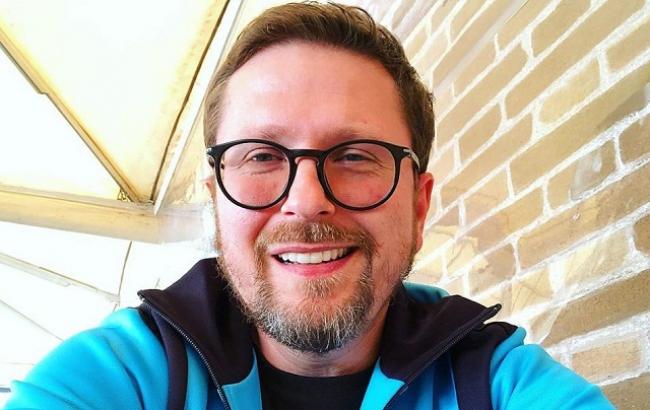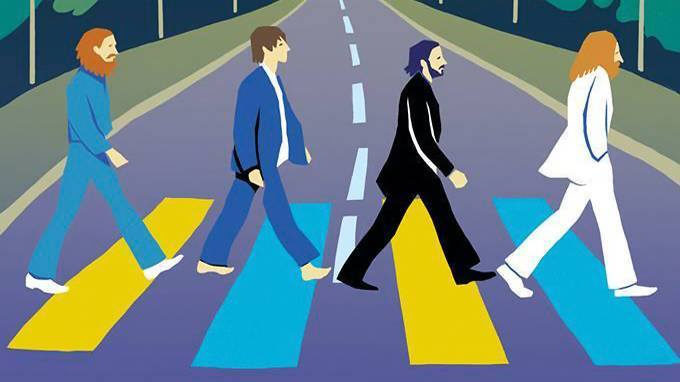After the Euromaidan revolution in 2014, the Ukrainian language flowered amid what has been called a national awakening. These gains appear to now be reversing.
“[In Ukraine,] the total number of views of video channels with direct or veiled pro-Russian propaganda is almost 2.5 times higher than the channels with a pro-Ukrainian position.”Data prove that purposeful state efforts, like those from 2016-2019, can rapidly increase the presence and prestige of the Ukrainian language. Conversely, the absence of clear state policy leads to the domination of the “Russian world" in Ukraine which is promoted synchronously by all available media means. 73% of Ukrainian citizens consider Ukrainian as their mother tongue, while 22% consider Russian as their mother tongue. At the same time, only 50% speak Ukrainian at home, while 28% speak Russian and 20% use both languages. Regarding the presence of the Ukrainian language in the public space -- especially virtual -- the numbers are yet lower.
TV is the main source of Russification again
Two-thirds of Ukrainians believe that the programming share of the Ukrainian language on television should be at least 75%. This was the quota established by law in 2017, but in practice, for the second year, there has been an increase in the Russian language in the sphere of Ukrainian-language TV. Notably, a discrepancy in the details of the TV law is that it only takes into account the language spoken by program moderators, not the total use of language throughout all programming. Careful monitoring by the NGO Prostir Svobody shows that only in 2018 -- during the strict observance of the law -- the share of Ukrainian language in TV outmatched the share of Russian language, sharply increasing to a record 64%. But in 2019, the share dropped. Then in 2020, it decreased even further and Russian actually became more frequent. Moreover, the primetime share of the Ukrainian language in six leading TV channels -- which also began to decline last year -- fell to 41% in October 2020, while purely Russian-language programming accounted for 46%.Social networks: a modern tool for the propaganda of the Russian language and narratives
If earlier, popular thinking among Ukrainians was that oligarchic-controlled TV channels would soon give way to internet freedom where Ukrainian culture could evolve, the algorithms have made unfavorable adjustments. Quite the opposite has happened. Overall, the Ukrainian internet has become the most Russianized space in the country -- this is especially true for social networks. While in actuality Ukrainian language use dominates in the majority of regions, only in four regions do internet users write their posts predominantly in Ukrainian. Meanwhile, in 20 regions Russian is the most frequently used language for writing posts.
In Ukraine, in total, 84% of posts are in Russian and only 16% of posts in Ukrainian.
YouTube unexpectedly becomes the worst threat for Ukrainian language and narrative
Among social networks, YouTube is the most Russified. Only 3.2% of videos that Ukrainians watched on YouTube are in Ukrainian while the rest are mainly in Russian.
Pro-Russian blogger Shariy

Medvedchuk's bot farms
A prominent example of the activity of Russian bot farms on YouTube is the channel of Viktor Medvedchuk -- Putin’s crony and head of the Political Council of the pro-Russian party Opposition Platform.- Read also: “Medvedchuk effect”: censorship attempt fails in Ukraine as prohibited book sold out within an hour

"If you impose the dynamics of the appearance of comments on the days of the week, there is a clear correlation. On Sunday, the number of comments decreases sharply. And so every week," says Prystupa.Using the platform SemanticForce, Prystupa analyzed 250 most active users on the page and found that 249 out of 250 are likely to be bots. The comments had similar wording and similar profiles:
"About 20% of these profiles were created on 15 April 2020. The average interval between their creation is a few minutes. And in the vast majority of profiles created on 9 January 2020, the last name and first name are capitalized … Discussions make up only 0.25% of the total number of comments [on Medvedchuk’s channel]. In comparison, the corresponding figure on Petro Poroshenko's official channel is 15%," adds Prystupa.Obviously, such augmentation arising from artificial accounts and bot farms could not be possible without the purposeful financial support from interested Russian donors.

Children's clubs and activity centers in the biggest cities are predominantly in Russian, violating state law
The state pays little attention to language use during extra-curricular activities, although the Ukrainian-first law was adopted a year ago. As of 16 January 2020, the relevant article of the law on Ukrainian language functioning as the state language came into force. Among others, it obliges service providers to use the Ukrainian language by default, including children’s clubs, like scouts and sports teams, or other youth activities, like dance lessons or drama groups, and a myriad of other examples. Exceptions are possible only for those who request to receive services in another language. Yet, classes in sports, dance, music, art, and other interests children partake in remain mostly in Russian, hampering the perception of the Ukrainian language as commonplace for Ukraine among the youngest generation. In effect, socializing them to be Russian-inclined. Volunteers of the Space of Freedom and the initiative Teach Ukrainian studied more than 200 activity providers and clubs for children in five large cities of Ukraine -- Kyiv, Kharkiv, Dnipro, Odesa, and Zaporizhzhia. It should be noted that other than Kyiv, these major cities are located in eastern Ukraine, thus the results are not a nationwide representation. Regardless, only 15% of extra-curricular lessons and activities were conducted in Ukrainian, 29% were in a mix of both languages, and the majority of 56% were in Russian. Children's clubs and activities are one of the factors that create a Russian-speaking environment for children, laying the stereotypes of language behavior for the future. Even in the capital of Ukraine, it is often a problem to find children's activities with instruction in Ukrainian.For the first time since 2014, the share of Ukrainian-language books and films dropped
Although the overall number of publications dropped due to the economic crisis caused by the coronavirus lockdown, it is important to note that the share of Ukrainian-language books fell from 84.4% in 2019 to 80% in 2020. This is the first such decrease since 2014 when Ukrainian-language publications began to increase steadily. Analysts from Prostir Svobody made similar observations about films. In 2020, the number of Ukrainian-language films produced in Ukraine dropped by 80%, from 159 in 2019 to 34 (from January to November) and is unlikely to change significantly by the end of the year. Although partially due to the economic crisis, the decrease has also been caused by the unprofessionalism and change of management in the Ukrainian State Film group. Nadiya Parfan, Ukrainian film director, explains in a recent interview.On any given day in Kyiv, more than one-third of service providers, like drivers, waiters and the like, will answer you in Russian, but regional variations are high
The law on obligatory use of the state language in passenger transport has been in force, and was the norm, for more than a year. Yet, according to this latest data, only 67% of bus station workers, 64% of intercity bus drivers, and 54% of city bus drivers respond to Ukrainian-speaking passengers in Ukrainian. At the same time, in eastern Ukraine violation of the law is often total, meaning that service providers use only Russian-language with customers or clients. However, in the western regions, the proportion of Russian-language use in restaurants or transport is close to zero.Read also:
- Ukraine creates free online courses of Ukrainian language for foreigners
- Russian as a minority language in Ukraine vs Russian as Putin’s weapon: Is there a compromise?
- Why Ukraine’s language law is more relevant than ever
- Explosion of new Ukrainian music after introduction of protectionist language quotas
- Ukraine adopts law expanding scope of Ukrainian language

